|
Monday 21st to Sunday
27th November 2022 |
| |
|
Any evening next week, look high up towards
the south east and spot the constellations of Cassiopea (the famous "W"
shape) and Perseus. Half way between the two constellations is a pair of
open star clusters known as the Double Cluster. |
| |
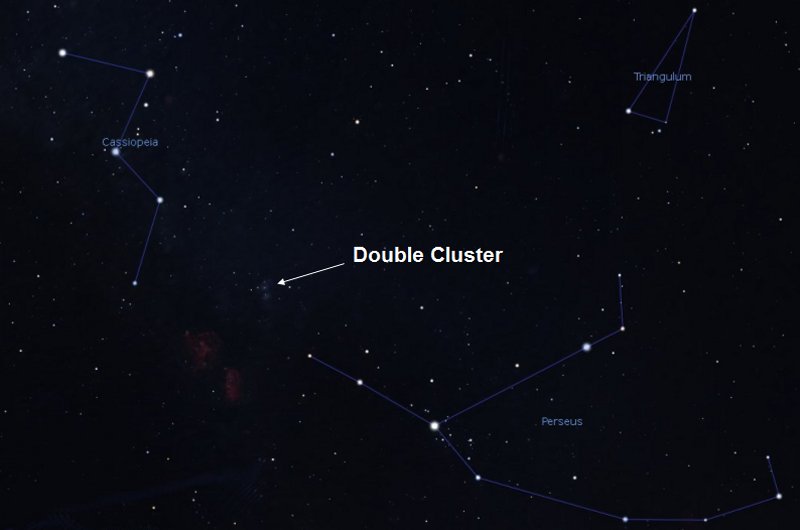 |
| |
|
The clusters have a magnitude of around +3.8
so should be visible to the naked eye if you are in a nice dark location,
but binoculars or a small telescope would be better. They are 7500 light
years away and in astronomical terms, they are youngsters, being only 14
million years old! By comparison, the Pleiades open cluster is between 75
and 150 million years old! |
| |
|
Time for a quick astronomy lesson.....the
Double Cluster is known as a "circumpolar" object. This means that from
high latitudes here in the northern hemisphere, it can been seen all through
the hours of darkness, all through the year. Or if you prefer it in simple
terms - it is just very high in the sky, like the pole star that everything
appears to rotate around. |
| |
|
Last week I spoke about an opportunity to
witness one of Jupiter's moons - Ganymede - disappearing behind the planet
while another of its moons -Europa - casts a shadow on the planet's surface
as it passes in front of the gas giant. If you miss that event on Sunday
20th, don't worry because the exact same scenario repeats on the evening of
Sunday 27th, but slightly later from 9pm. |
| |
|
Aim your telescope towards the south west and
Jupiter will be very obvious, shining at a magnitude of -2.6 while further
to the west, Saturn will be getting close to the horizon and appearing a
little dimmer. |
| |
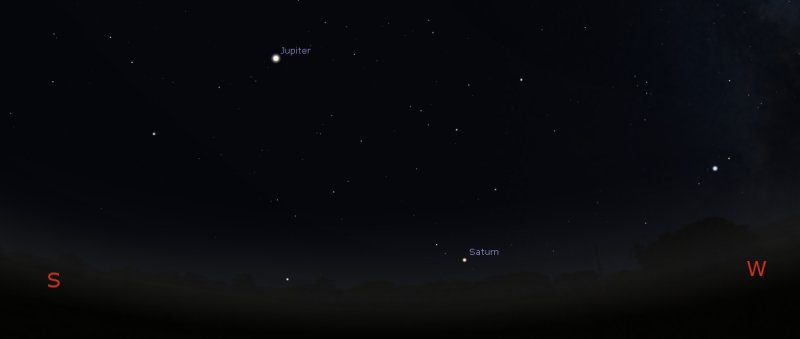 |
|
Monday 14th to Sunday
20th November 2022 |
| |
|
The evening of Thursday 17th into the early
morning of Friday 18th sees the peak of the Leonids meteor shower. By
midnight on the Thursday night, the constellation of Leo the Lion will have
risen above the horizon towards the east and the radiant point, where the
shooting stars appear to originate from, is just above the stars marking the
lion's head. |
| |
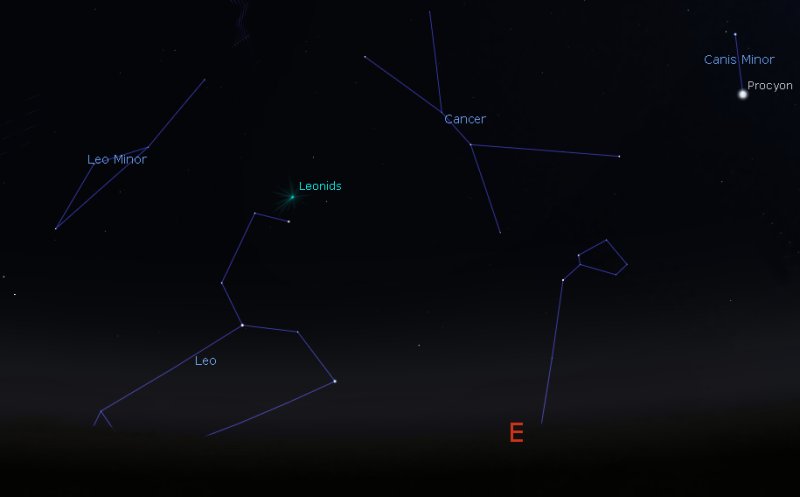 |
| |
|
The zenithal hourly rate is around 10 meteors
per hour and the fast-moving streaks of light are created by particles left
from comet Tempel-Tuttle, some as small as a grain of sand, entering the
Earth's atmosphere at speeds of up to 70 kilometers a second. |
| |
|
By 1am on the Friday morning, a 33%-lit
waning Crescent Moon will have also risen above the horizon in the east and
the light pollution from it will then spoil your viewing somewhat. |
| |
|
Officially, planet Jupiter has 80 moons
orbiting around it and 57 of them have been given names by the International
Astronomical Union. The four largest - Io, Europa, Ganymede and Callisto -
are known as the Galilean moons because they are the ones that Galileo first
saw in his telescope back in 1610. With binoculars or a small telescope,
you can sometimes see all four of them, but on other occasions one or two
appear to be missing because their orbit takes them behind the planet. |
| |
|
If you aim your telescope south east towards
Jupiter just after dark, at 5.30pm on Sunday 20th, you will catch Ganymede
disappearing behind the planet while Europa casts a shadow on the planet's
surface as it passes in front of the gas giant. |
| |
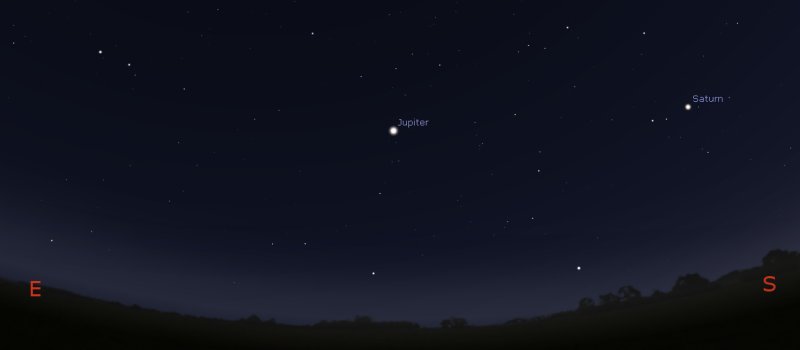 |
| |
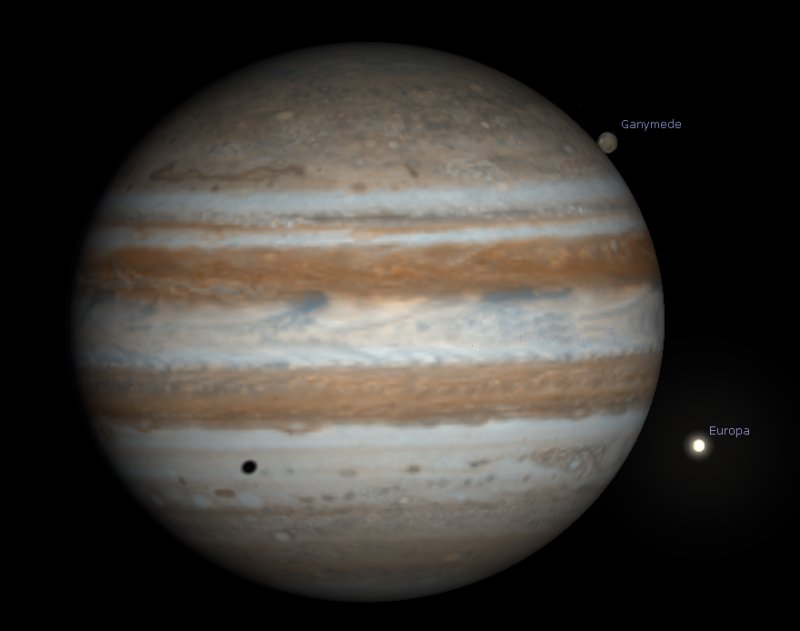 |
|
Monday 7th to Sunday
13th November 2022 |
| |
|
I'm going to suggest a little adventure for
telescope users, but you will need to be up around 5am on Monday 7th. The
reward for such an early start is the chance to observe a collection of
distant galaxies and the dwarf planet Ceres which is the largest object in
the Asteroid Belt. |
| |
|
First find the constellation of Leo the Lion
towards the south east. Then locate the bright star Chertan which is in the
vicinity of the lion's bottom! A little below Chertan is a group of three
galaxies, known as the "Leo Triplet". |
| |
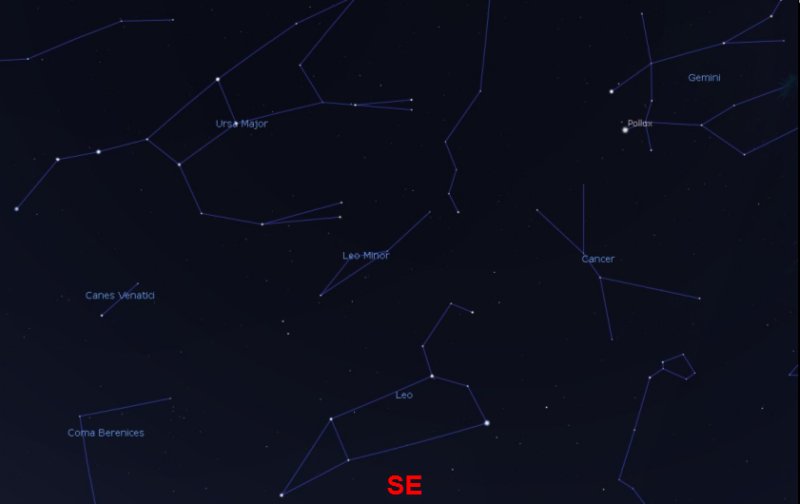 |
| |
 |
| |
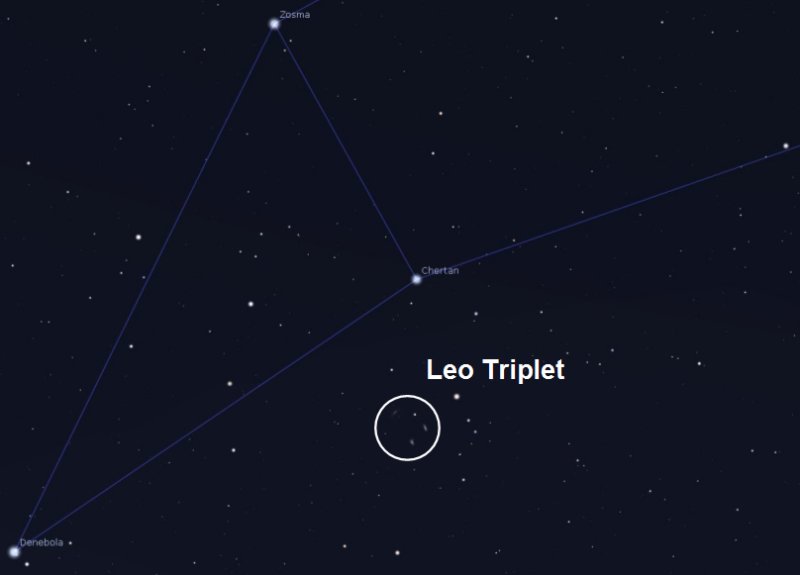 |
| |
|
These three spiral galaxies are named M65,
M66 and NGC3628. They have magnitudes between +9.0 and +10.0 because they
are over 35 million light years away! If you look at them in your
telescope, you are seeing these deep sky objects how they were 35 million
years ago because their light has taken that long to reach us! |
| |
|
If you imagine these three galaxies as
marking three corners of a square, dwarf planet Ceres will be marking the
4th corner, shining at a similar magnitude. |
| |
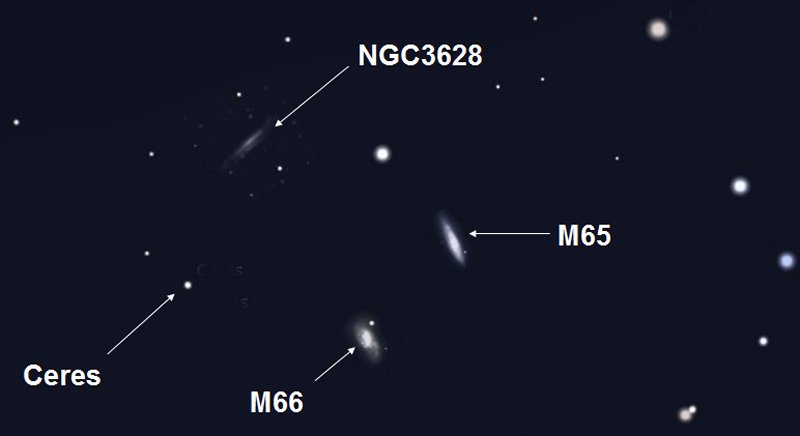 |
| |
|
There is a further opportunity to observe two
of Jupiter's moons, Europa and Ganymede, transiting across the face of the
planet between midnight and 1.30am on the morning of Thursday 10th. At that
time, Jupiter will be located towards the south west. |
| |
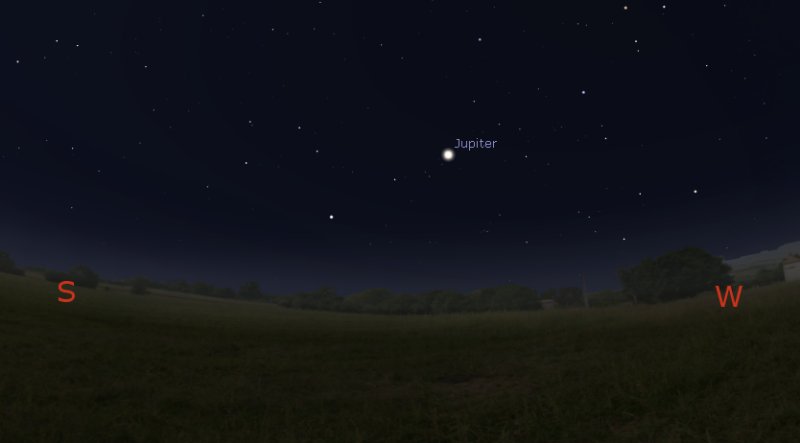 |
| |
|
Finally, a couple of dates for your diary.
As my last astronomy lectures at Ham Hill sold out so fast, I have managed
to agree two further evenings on 27th January and 17th February next year. |
|
Monday 31st
October to Sunday 6th November 2022 |
| |
|
This month, Mars makes a great target as it
approaches opposition when it will be at its brightest. This coming week
the Red Planet will be located towards the east if you go outside around
10pm and shining at a magnitude of around -1.3 which is pretty bright - a
similar brilliance to Sirius which is the brightest star in the night sky. |
| |
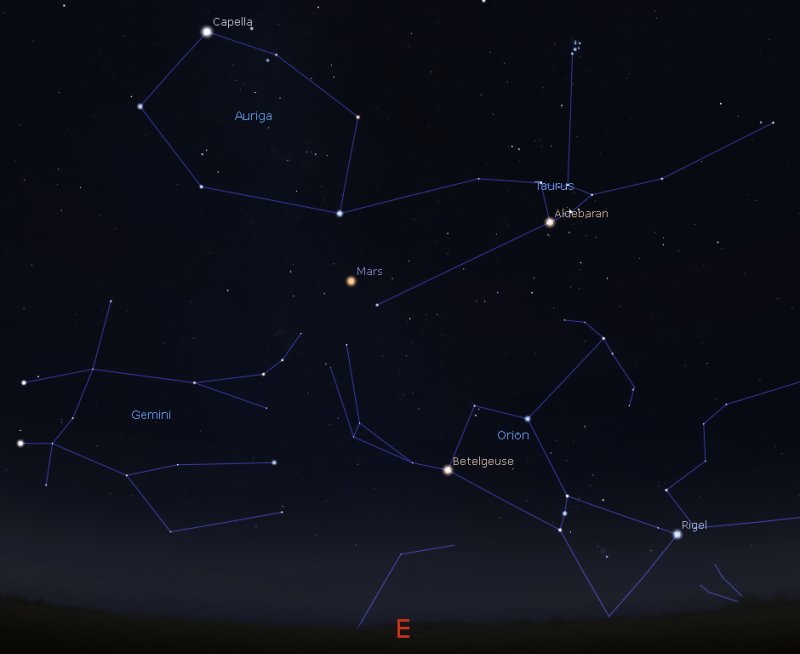 |
| |
|
You could go outside a bit earlier after it's
become dark to see Mars, but then it will be lower in the sky and won't look
so good in a telescope as the light reflecting from the planet's surface
will be passing through more of our atmosphere and this distorts the light
waves. |
| |
|
At the same time, you could look to the right
of Mars to see the constellation of Orion, with the constellation of Taurus
above it and the Pleiades open cluster of stars M45 above that. Remember
that the "sword" of Orion is the location of the Great Orion Nebula M42, so
it would be worth aiming at that one too! |
| |
|
If you take your telescope out just before
9pm on Wednesday 2nd there is a chance to see two of Jupiter's moons, Europa
and Ganymede, transiting across the face of the gas giant. Jupiter will be
located towards the south, with the Moon to the right of it and Saturn
further right again. Our Moon will have just gone past its First Quarter
phase so will appear as a waxing Gibbous Moon. |
| |
 |
| |
|
Of course when you've had enough of watching
Europa and Ganymede, you could have a go at Saturn's rings and then turn
your telescope towards the east to view Mars that will be nice and high in
the sky by then. |
|
Monday 24th to
Sunday 30th October 2022 |
| |
|
The big news is a partial solar eclipse
taking place on Tuesday 25th between 10am and midday. The maximum effect
will be seen around 11am. Observers in the north of England will have the
best view at a magnitude of 35%, but it will still be worth going outside to
see it down here in the south west where the magnitude will be 17%. |
| |
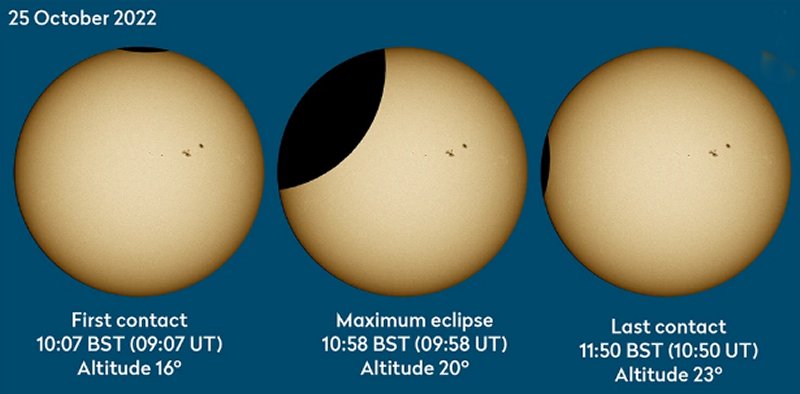 |
| |
|
Eclipse diagram courtesy of Pete
Lawrence, Sky at Night Magazine |
| |
|
Nothing in science and especially astronomy
is simple and the term "eclipse magnitude" has nothing to do with how bright
it is, rather how far the eclipsing body extends over the diameter of the
object being eclipsed. In other words, if the Moon's edge reached the
middle of the Sun's disc, then the eclipse magnitude would be 50%. A total
eclipse would be 100%. |
| |
|
Talking about brightness, please remember
that you must never ever look at the Sun through a telescope or binoculars -
even the quickest glimpse will result in permanent blindness. Also I
wouldn't be temped to use those old solar viewing glasses that were
mass-produced for the 1999 total eclipse - they are not the best quality to
start with and may have been damaged in storage. |
| |
|
So how do you look at it? In the absence of
a dedicated solar telescope costing thousands of pounds, the safest method
is to use a technique called "pinhole projection". Let the Sun shine
through the holes of a colander from the kitchen. Place a piece of white
card a little distance underneath it or hold the colander near a while wall
and you will see multiple images of the eclipse projected onto the card. On
a smaller scale, you could even use one of those old metal tea strainers. |
| |
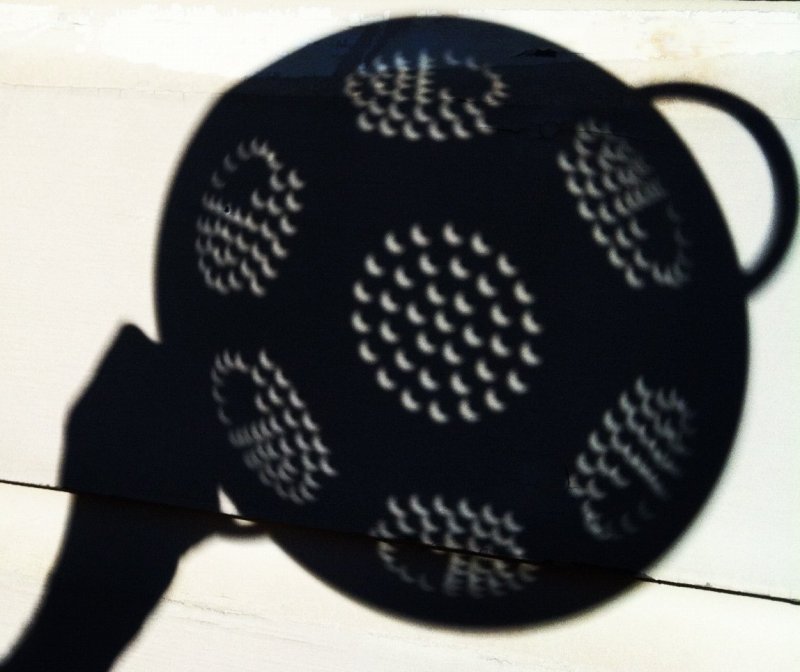 |
|
Monday 17th to
Sunday 23rd October 2022 |
| |
|
If you go outside after 10pm on Monday 17th,
the constellation of Taurus will have risen above the horizon in the east,
with the Pleiades open cluster of stars above it. Planet Mars will be to
the left of Taurus. |
| |
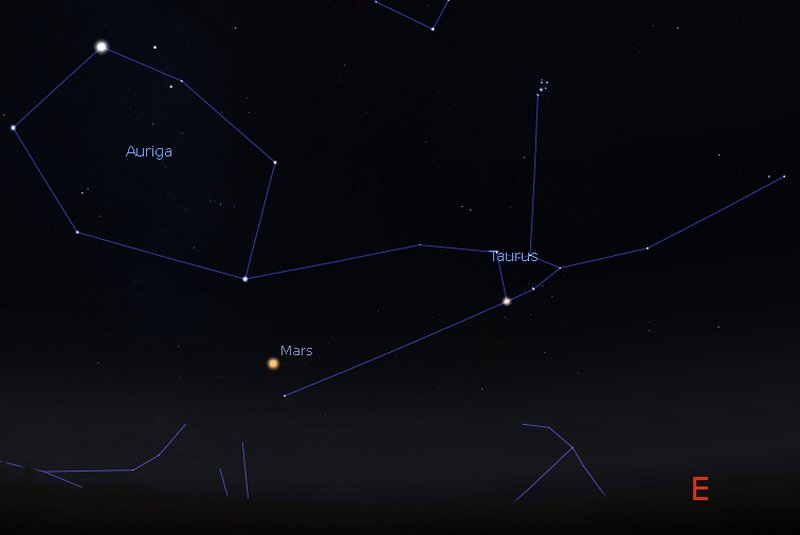 |
| |
|
Approximately half way between Mars and the
star Zeta Taurus (which is the constellation's bottom left star) you can
find the Crab Nebula. It was the first deep sky object that Charles Messier
catalogued and is therefore also known as M1. The nebula has a magnitude of
+8.4 so is too faint to be seen with the naked eye. A telescope or
binoculars should reveal a fuzzy blob that is estimated to be between 5000
and 8000 light years away from us. |
| |
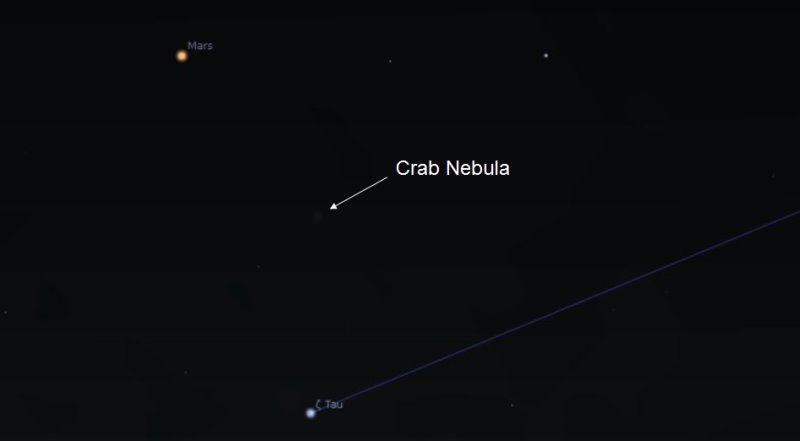 |
| |
|
The astronomer John Bevis first spotted the
fuzzy blob in 1731 and Messier catalogued it a few decades later. In 1842,
William Parsons who was the 3rd Earl of Rosse, used his large 36 inch
telescope to draw the nebula and his sketch looked a bit like a crab - hence
its common name. The nebula contains the remnants of a supernova that the
ancient Chinese observed in 1054. In the centre is a neutron star that
emits loads of x-ray and gamma radiation. |
| |
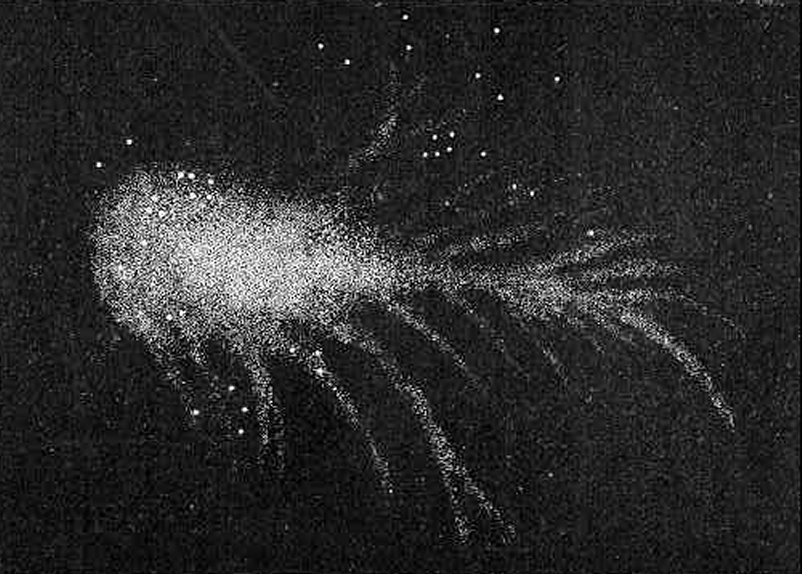 |
| |
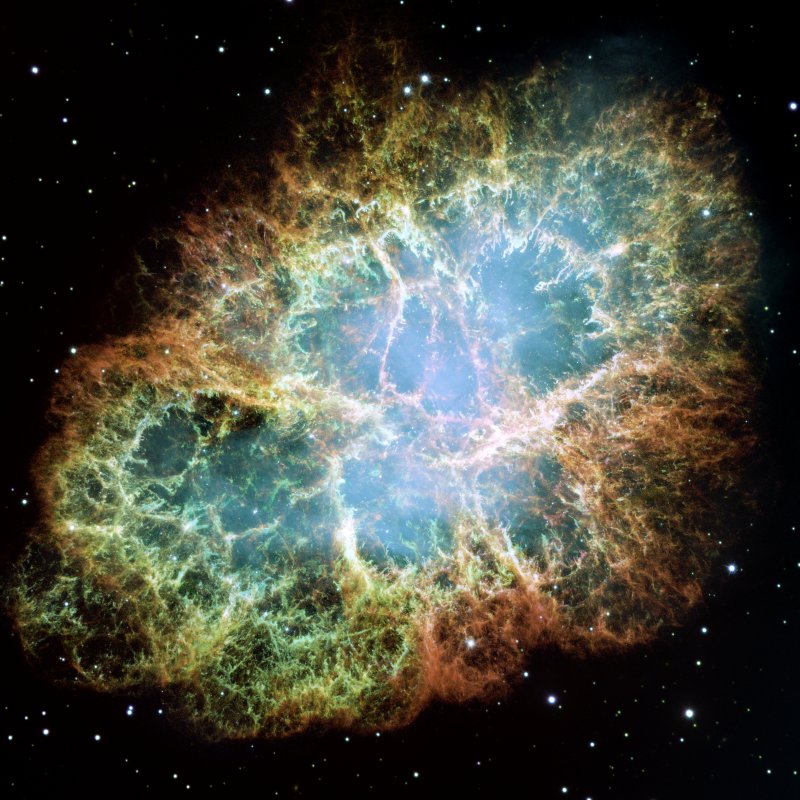 |
| |
|
Crab Nebula images courtesy of
Wikipedia |
| |
|
Moving towards the end of the week and a bit
closer to home, the evening of Friday 21st sees the peak of the Orionids
meteor shower, so named because the radiant point where the meteors appear
to originate from is in the constellation of Orion close to the star
Betelgeuse. As you approach midnight, Orion will have risen above the
horizon to the east. The meteors are produced as the Earth passes through
the dust left by comet Halley. The shower has a zenithal hourly rate of
around twenty meteors per hour and a lack of Moon in the night sky that
evening gives the best chance of seeing some. |
|
Monday 10th to
Sunday 16th October 2022 |
| |
|
Last week I talked about a waxing Gibbous
Moon - waxing because it was getting brighter as it headed towards a Full
Moon. Now we are past the Full Moon, it appears as a waning Gibbous Moon. |
| |
|
If you go outside around 5am on Wednesday
12th, a 94%-lit waning Gibbous Moon will be towards the south west, with
planet Uranus a little above it and to the left. Uranus will have a
magnitude of about +5.6, so in theory at least, it could just be visible
with the naked eye from a very dark location, BUT there will be light
pollution from the Moon meaning that you should really dig out those
binoculars or a small telescope. |
| |
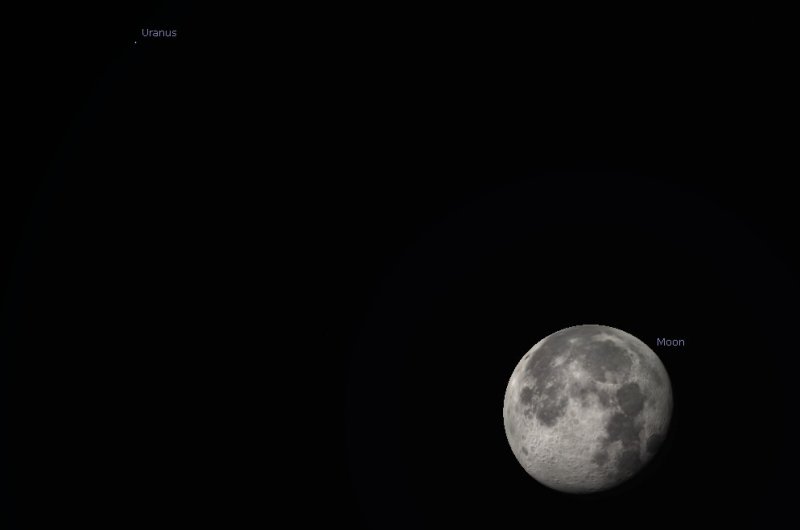 |
| |
|
If you aim towards the south instead, you
will see the constellation of Orion with planet Mars above it. Half way
between Mars and the Moon will be the Pleiades open cluster of stars sitting
just above the constellation of Taurus that has the bright star Aldebaran in
it. |
| |
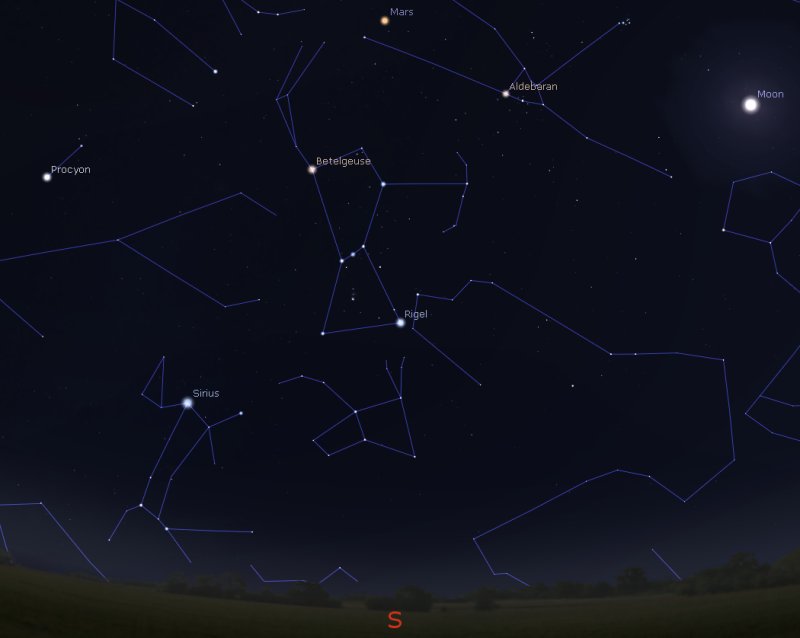 |
| |
|
There are several interesting astronomical
events coming up later this month, including the Orionids meteor shower and
a partial eclipse of the Sun, but for now I am going to make another blatant
advertisement for the two astronomy lectures and star parties that I am
running at the Ham Hill Visitor Centre. They are taking place on Friday
21st October and Friday 18th November, with a talk at 7pm, followed by
refreshments at 8pm before we venture outside to have a look at the night
sky. |
| |
|
Booking is essential as places are limited
and you can do this via the
www.visitsouthsomerset.com website or by scanning the QR code on
the posters below. |
| |
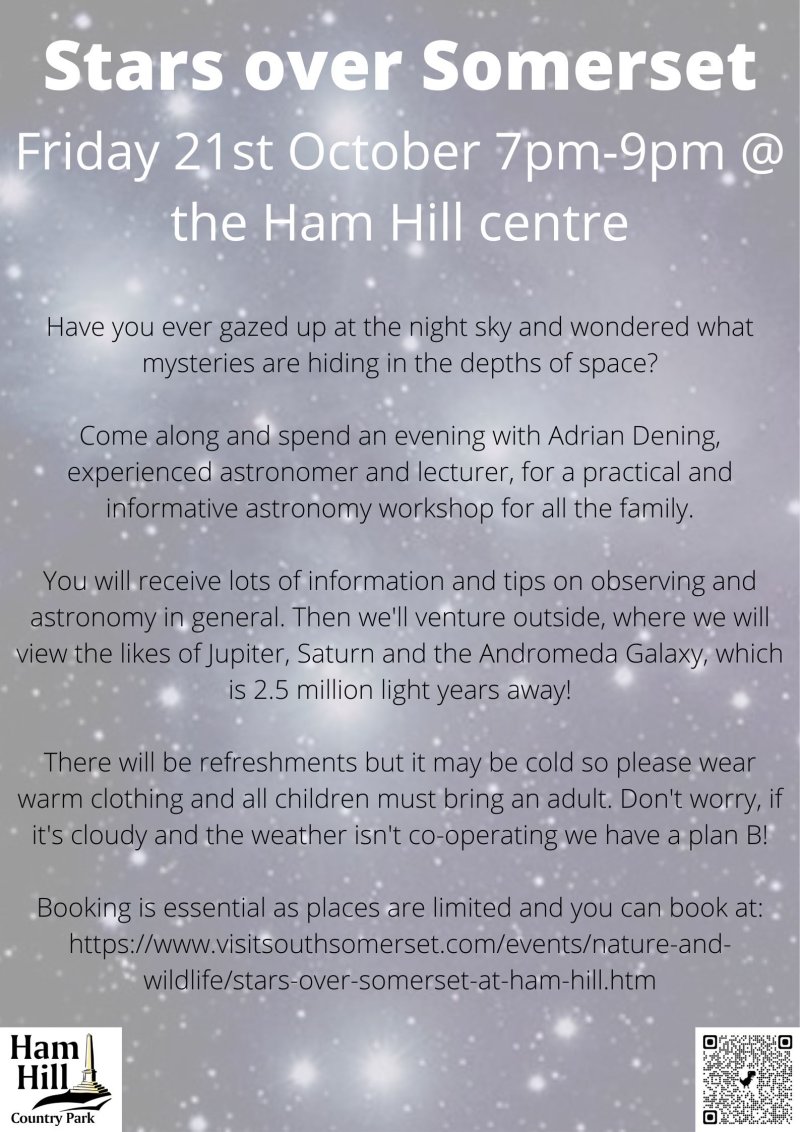 |
| |
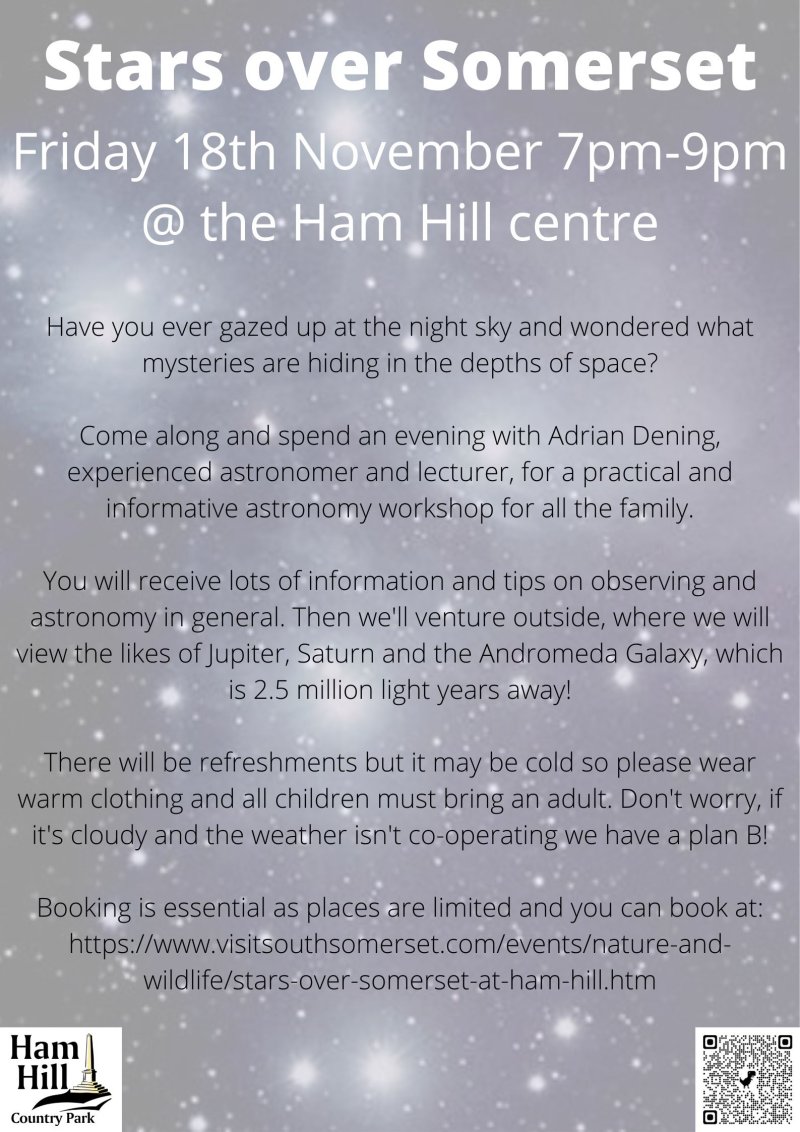 |
|
Monday 3rd to
Sunday 9th October 2022 |
| |
|
If you venture outside just after dark on
Wednesday 5th, there is an opportunity to see Saturn with an 80%-lit waxing
Gibbous Moon just below it. By around 9pm, the pair will be located towards
the south. |
| |
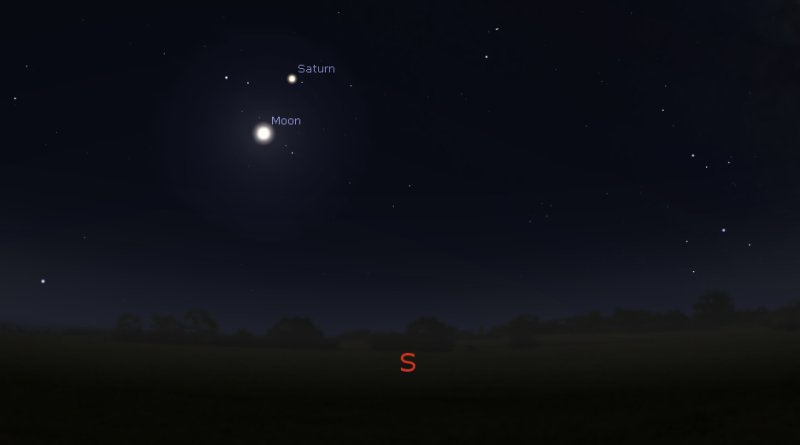 |
| |
|
If you go back outside at the same time a few
days later, on Saturday 8th, then a 98%-lit waxing Gibbous Moon will be
towards the south east, just below Jupiter. |
| |
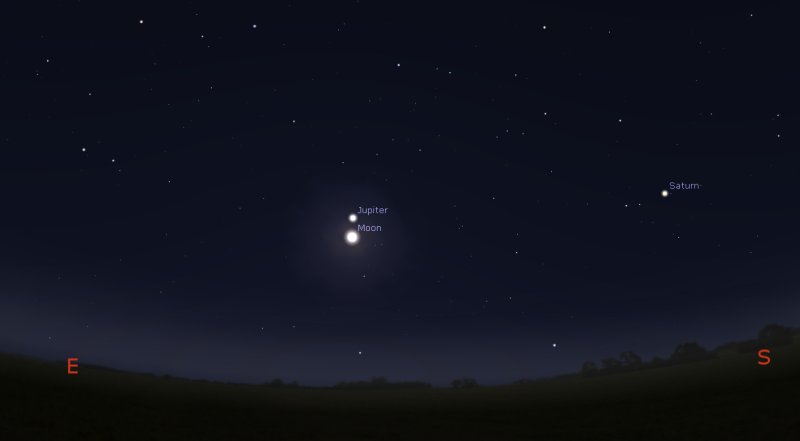 |
| |
|
The Full Moon occurs the following evening,
on Sunday 9th. When talking about the phases of the Moon caused by Sunlight
hitting its surface at different angles as it orbits around us, "waxing" and
"waning" are old English words meaning "getting stronger or increasing in
brightness" and "becoming weaker or decreasing in brightness". So the Moon
is "waxing" as it heads towards a Full Moon when it is then 100%-lit and
"waning" as it moves towards a New Moon. |
| |
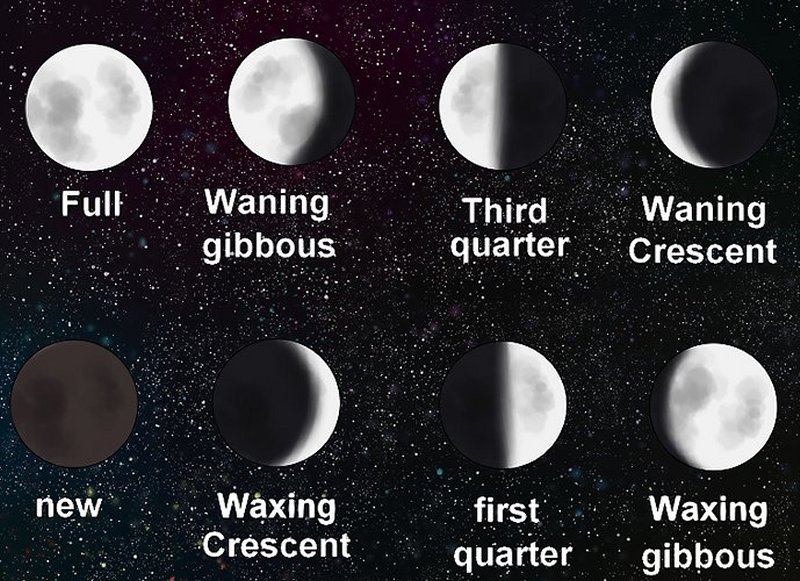 |
| |
|
Diagram courtesy of Wikipedia |
| |
|
If early morning astronomy is more your
thing, then there are several treats awaiting you around 6am on Saturday
8th. To the east, Mercury will be rising above the horizon. The planet is
at its greatest elongation or in other words, the furthest it gets away from
Sun. At the same time, the constellation of Orion with Betelgeuse and Rigel
will be towards the south, with the brightest star in the night sky, Sirius,
just below it and planet Mars a little above the constellation. |
| |
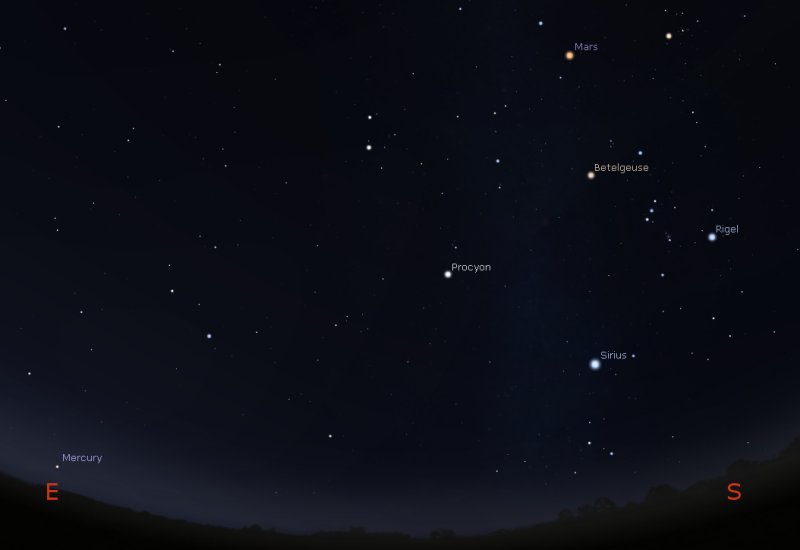 |
| |
|
Please remember that if you are tempted to
use binoculars or a telescope to get a better view of Mercury, you must be
very careful that you do not catch even a glimpse of the Sun as it rises
shortly afterwards! |
| |
|
To learn more about the Moon's phases or
general astronomy, come along to one of my Stars Over Somerset lectures at
Ham Hill on 21st October and 18th November. |
| |
 |
| |
 |



























